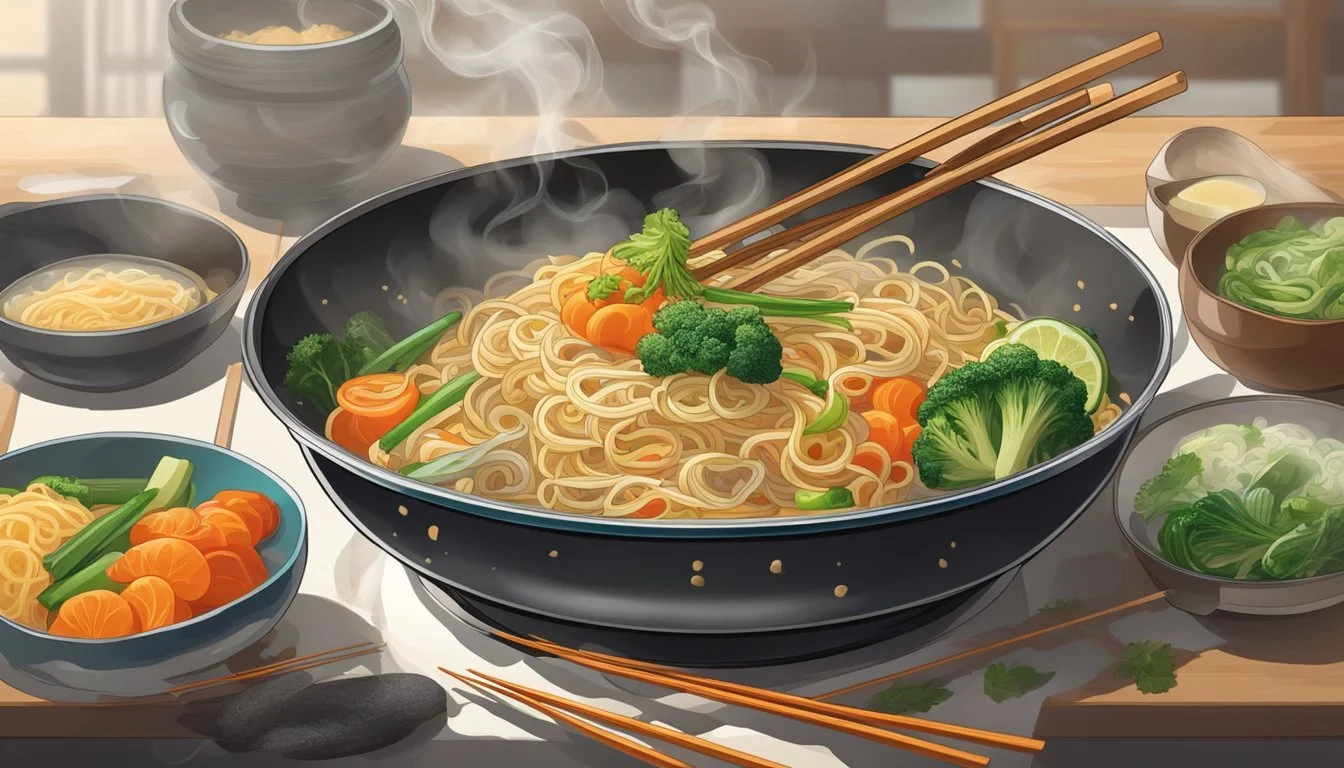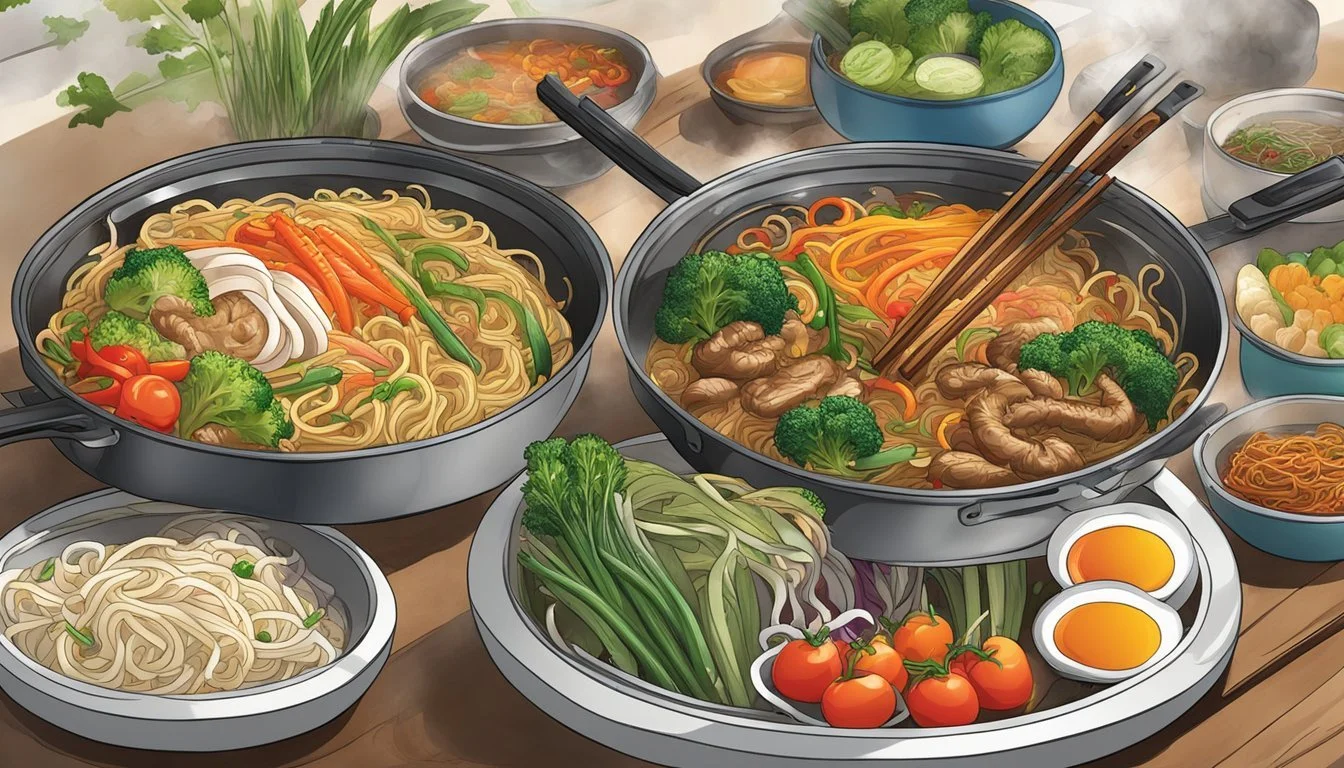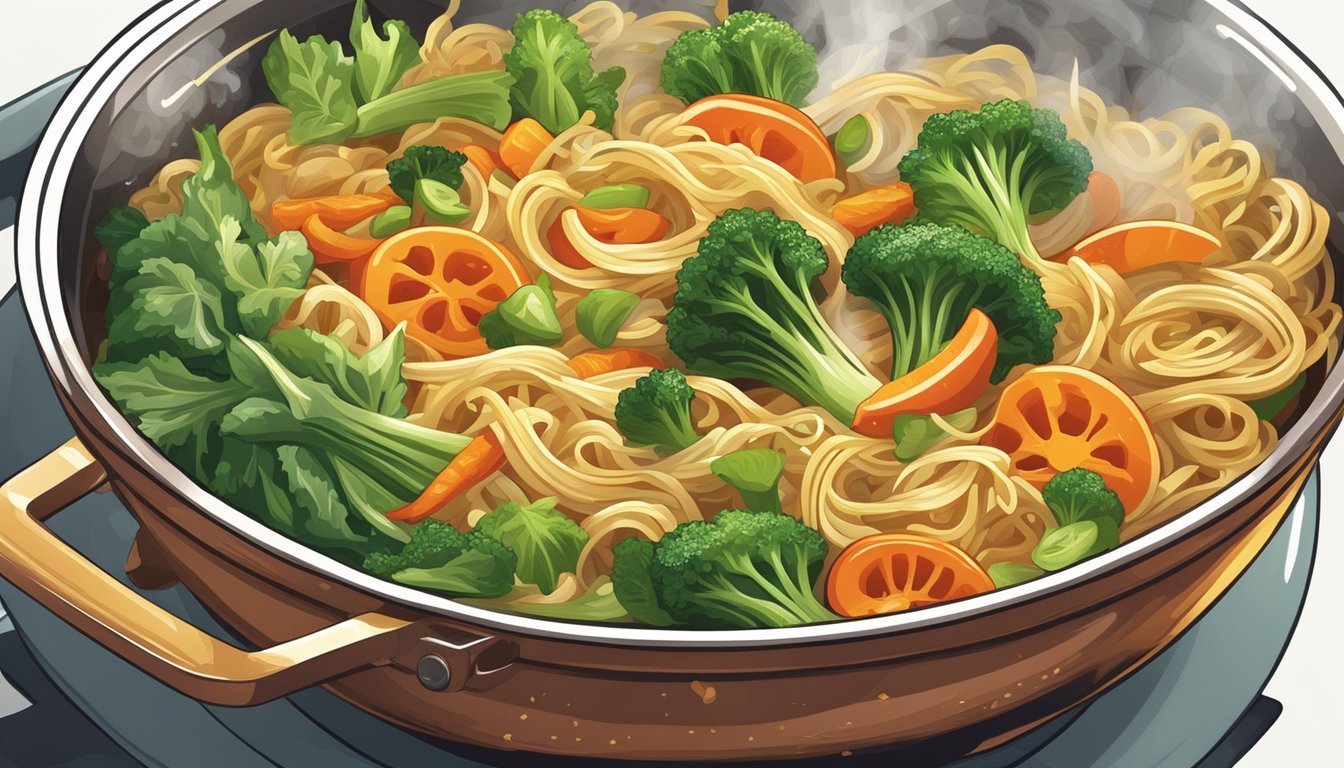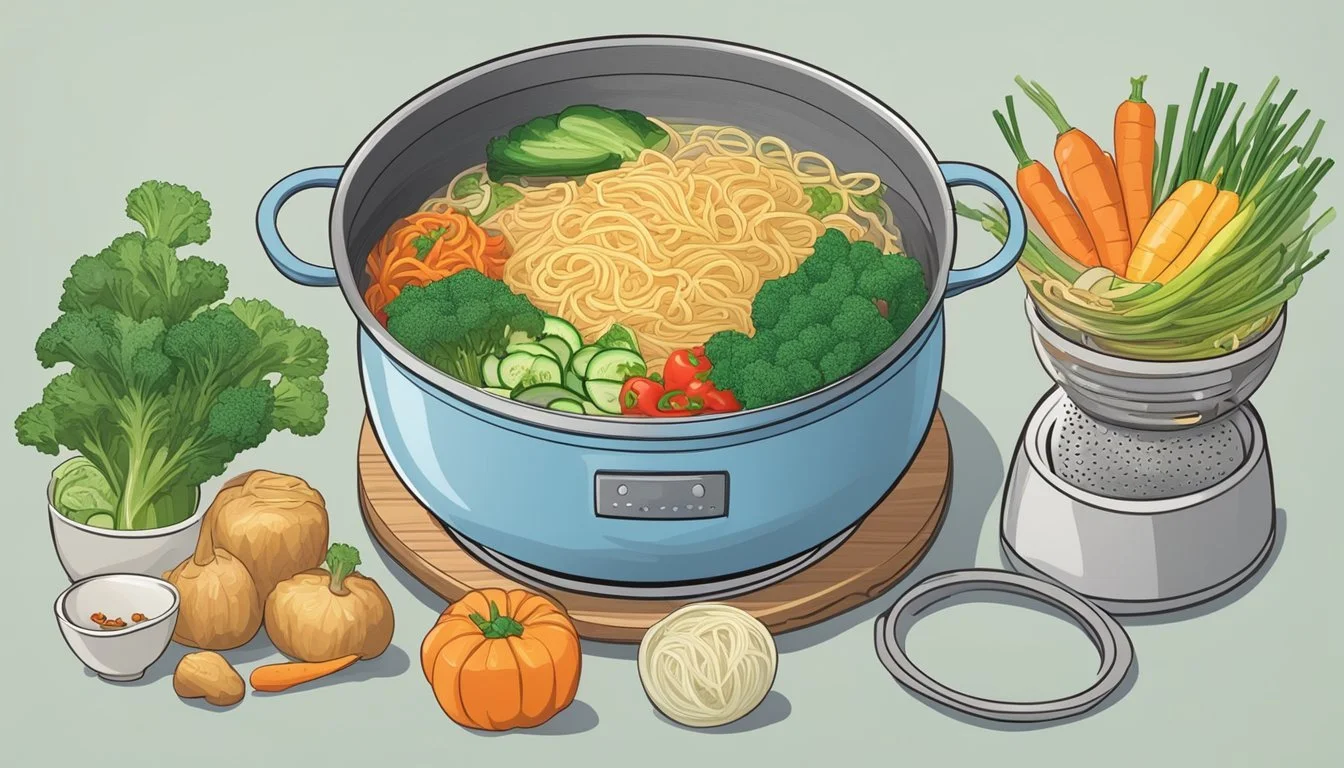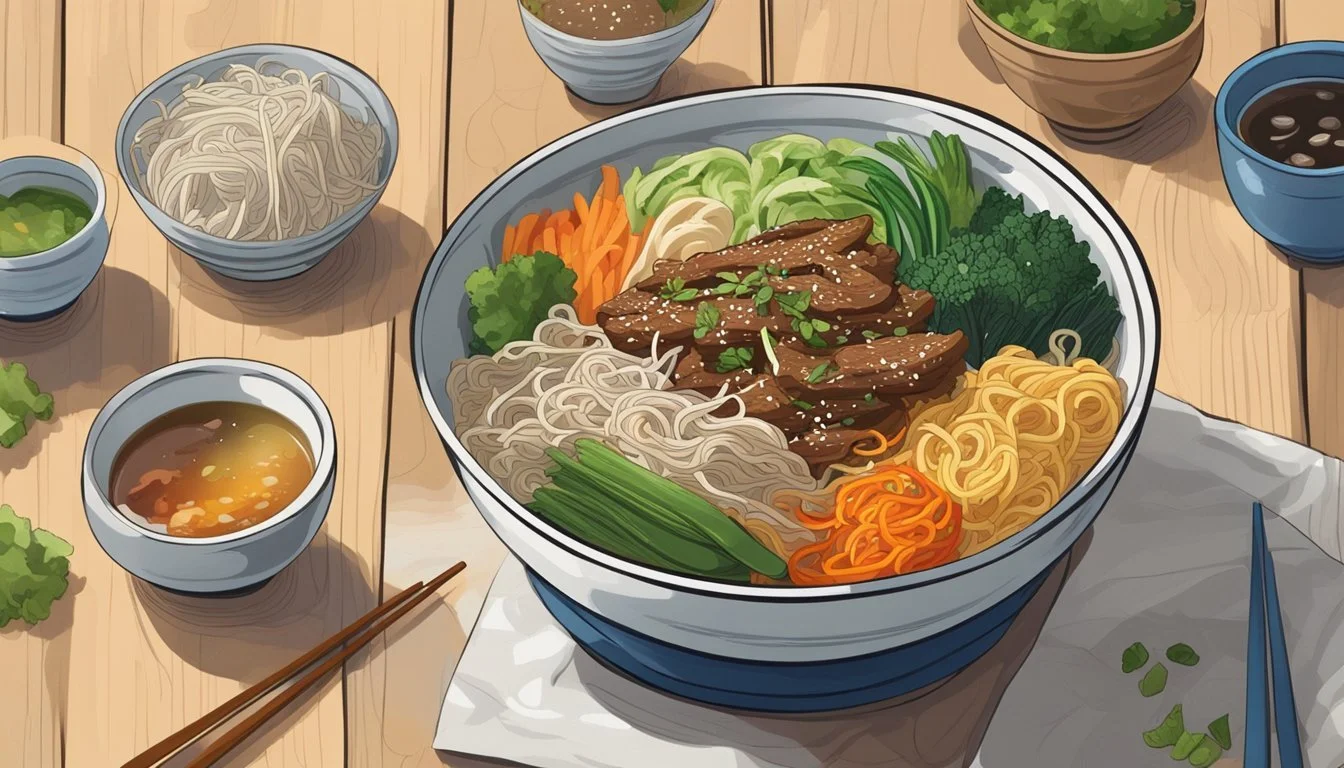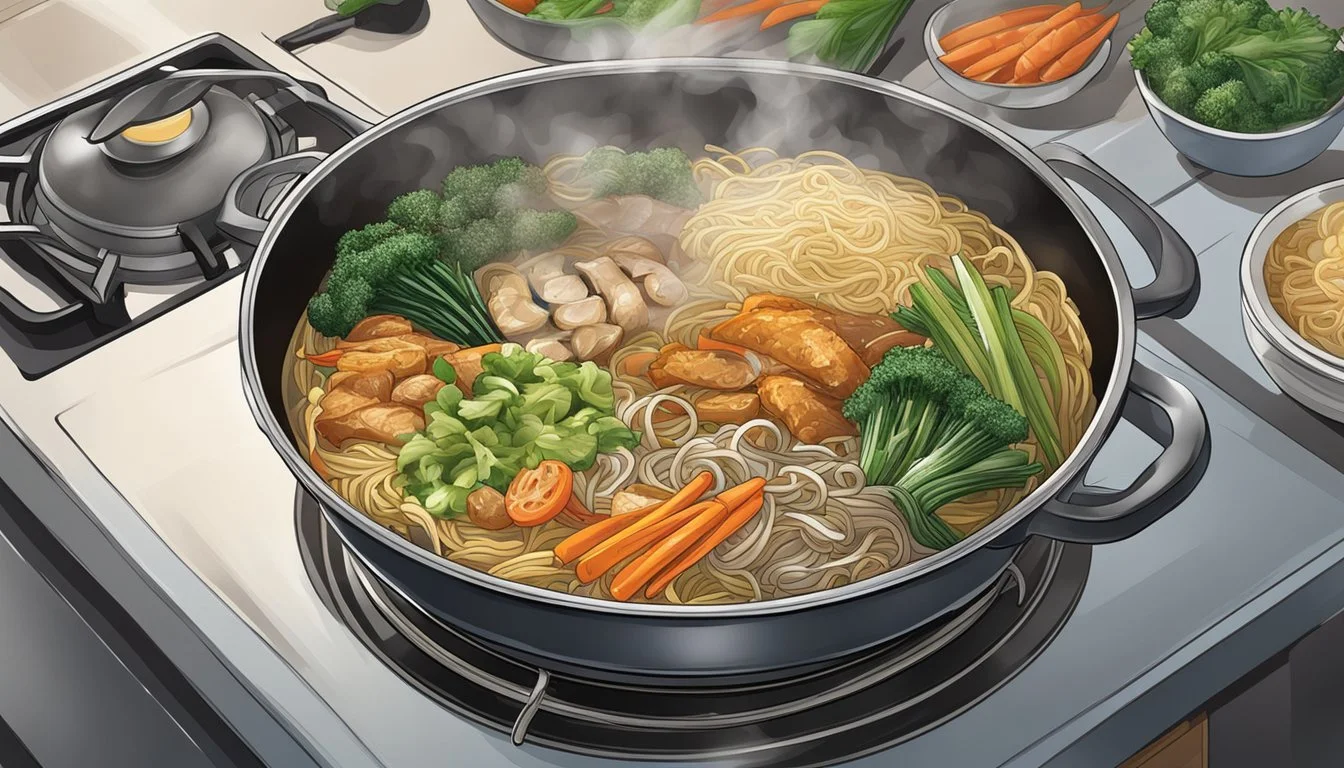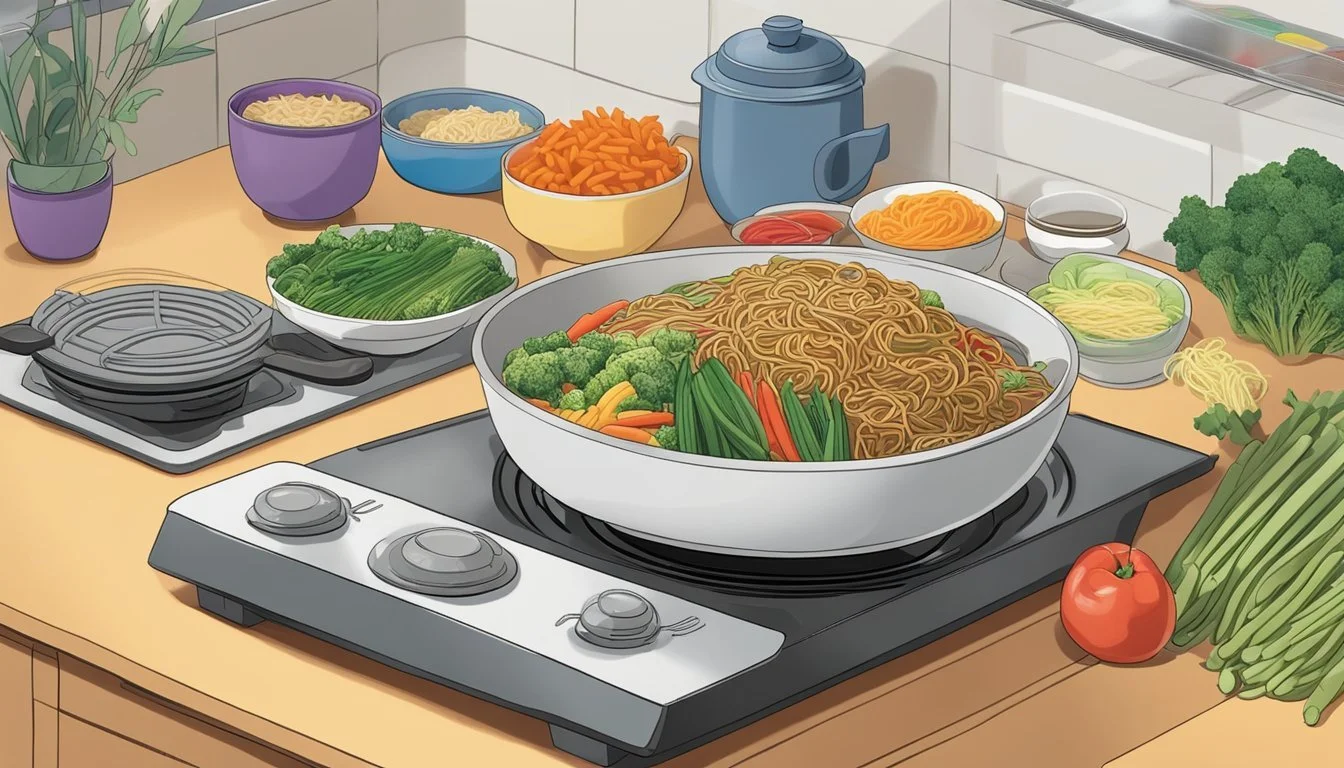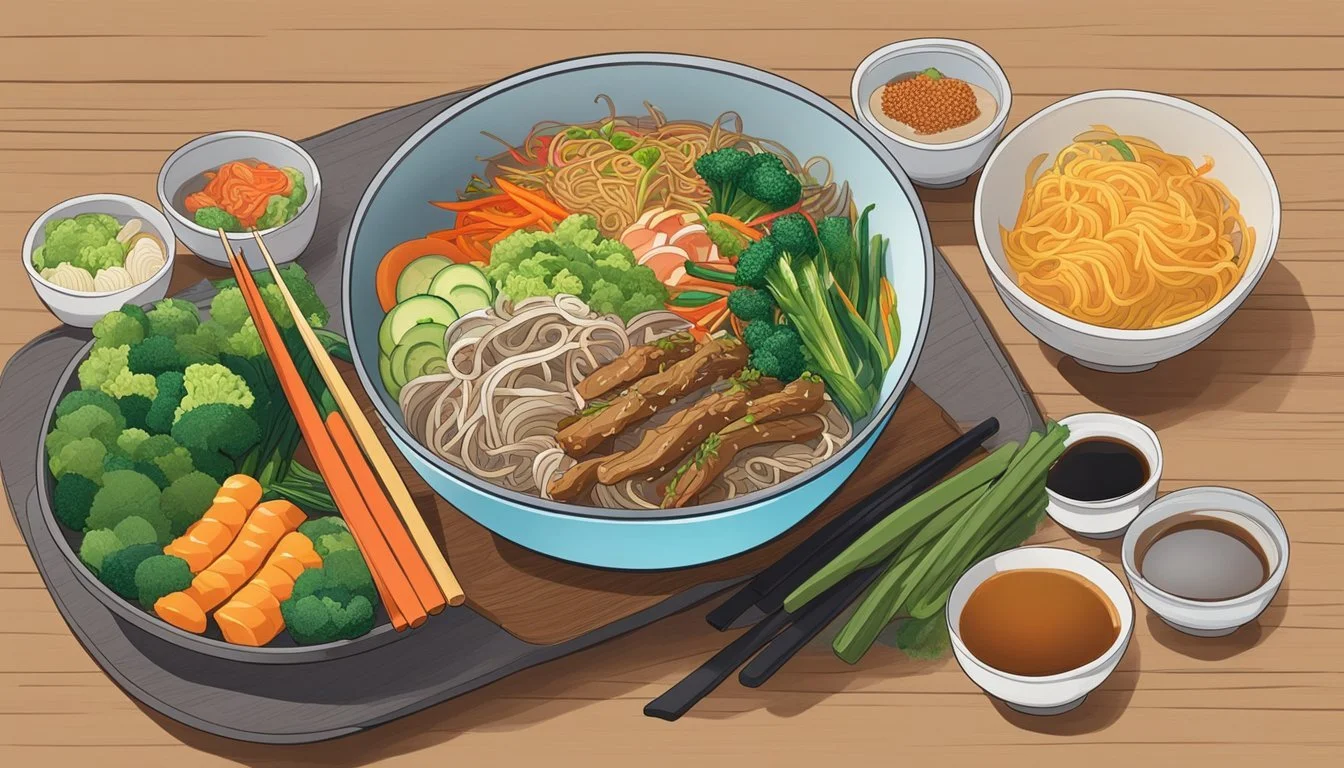Best Way to Reheat Korean Japchae
Ensuring Perfect Chewiness and Fresh Veggies
Korean Japchae, a beloved traditional dish known for its savory flavors and an intricate mix of stir-fried glass noodles and vibrant vegetables, requires a careful approach to reheating. The key lies in preserving the chewy texture of the dangmyeon, sweet potato starch noodles, and maintaining the freshness of the colorful vegetable medley. Often served at Korean feasts and celebrations, Japchae is not only a treat to the taste buds but also a delightful visual presentation, with its array of ingredients playing a symphony of colors on the plate.
When Japchae is not consumed in one sitting, the challenge most people face is how to reheat the leftovers without compromising on its unique texture and the crispness of the vegetables. Since Korean glass noodles have a specific chewiness when cooked fresh, reheating japchae requires a gentle touch to avoid a gummy or overly soft texture. Different reheating methods such as microwaving, stove-top, or oven can be employed, each with its own set of steps to ensure that the noodles do not stick together and the vegetables remain as lively as they were when first served.
An effective reheating technique not only restores the warmth but also revitalises the flavors that make Japchae so distinct. While the method of reheating is crucial, equally important is the preparation prior to it – such as adding a sprinkle of water to prevent the noodles from drying out and keeping the heat moderate to ensure the vegetables stay tender yet crisp. It's this meticulous process that allows one to once again indulge in a dish that is at the heart of Korean culinary tradition, even after it has cooled.
Understanding Japchae
Japchae is a beloved Korean dish renowned for its chewy glass noodles and colorful assortment of vegetables and meats. The dish harmoniously blends various textures and flavors, with the starch from the noodles playing a key role in its unique consistency.
Components of Japchae
Glass Noodle: The primary ingredient of Japchae is the glass noodle, often made from sweet potato starch. These noodles are known for their transparent appearance and a pleasantly chewy texture that's both appealing and distinctive.
Vegetables: A typical Japchae includes a vibrant mix of vegetables such as spinach, carrots, onions, and mushrooms, each bringing their own color, texture, and nutritional benefits to the dish.
Meat: Often, thinly sliced beef is added for its savory flavor, though japchae can also be adapted for vegetarian preferences.
Seasoning: Essential seasonings like soy sauce, sugar, and sesame oil are used to enhance the dish, balancing saltiness with a hint of sweetness and a rich, nutty aroma.
The Role of Starch in Japchae Noodles
Sweet Potato Starch: Noodles made from sweet potato starch are not only pivotal for their gluten-free characteristic but also for the chewy texture they impart. When reheating, it’s crucial to maintain this texture to preserve the integrity of the dish.
Starch Preservation: Proper reheating techniques are paramount in preventing the noodles from becoming either too soggy or too stiff, avoiding the loss of their desirable al dente quality.
Preparing Japchae for Reheating
Proper preparation is crucial for preserving the quality of Japchae when reheating. This process involves correct storage to maintain freshness and a pre-reheating procedure to ensure a delightful dining experience.
Storage Tips
Immediately store leftover Japchae in the fridge within two hours of cooking to reduce the risk of bacterial growth.
Place the Japchae in an airtight container to prevent moisture loss and odor absorption from other foods.
Pre-Reheating Procedure
Before reheating, separate any excess sauce from the noodles to avoid them becoming too soft.
Allow the Japchae to come to room temperature for about 10 to 15 minutes for more even heating. This step can reduce the likelihood of the noodles becoming too chewy or the vegetables losing their vibrant texture.
Reheating Techniques
Proper reheating of japchae is crucial to maintain its texture and flavor. The following methods offer reliable options for warming up this traditional Korean dish while keeping the noodles chewy and the vegetables vibrant.
Microwave Method
In a microwave-safe bowl, one should place the japchae and sprinkle it with a small amount of water to prevent drying out. Covering the bowl loosely with plastic wrap helps to retain moisture. It's recommended to heat the dish on full power in 15-second increments, stirring gently between intervals, until the japchae is adequately hot.
Power: Full
Time: 15-second increments
Additional Tips: Sprinkle water; stir between intervals
Stovetop Method
The stovetop approach preserves the texture of japchae nicely. Heating a skillet over low heat is the start; then, one should add a tablespoon of sesame oil for flavor enhancement. The japchae is then placed in the skillet, stirred frequently, and cooked for approximately 3-5 minutes, or until adequately heated through.
Heat: Low
Oil: 1 tablespoon of sesame oil
Duration: 3-5 minutes
Oven Method
Reheating japchae in an oven involves spreading the noodles evenly on a baking pan. A light application of non-stick cooking spray can prevent sticking. Placing the dish in a preheated oven and heating it for about 9-10 minutes should thoroughly warm the japchae without compromising its texture.
Temperature: Preheated oven
Time: 9-10 minutes
Additional Steps: Non-stick spray; spread noodles evenly
Each method must be monitored to ensure the japchae is reheated to just the right temperature, allowing the dish to express its full range of flavors while preserving the desired texture of the ingredients.
Seasoning and Sauce Tips
Proper seasoning is crucial for rejuvenating reheated Japchae, allowing for the preservation of its distinct savory-sweet flavor profile. The sauce mixture, balanced between soy sauce and sesame oil, is key to maintaining the dish's authenticity during reheating.
Adjusting the Flavor
When reheating Japchae, one may find that the flavor has diminished slightly. To ensure the dish maintains its full-bodied taste, some adjustments might be necessary. A small amount of sesame oil can be added to enhance the nutty aroma and richness. The cook should be mindful not to overpower the dish, as sesame oil is quite potent.
When to Add More Soy Sauce
The addition of soy sauce should be considered if the noodles appear dry or if the Japchae lacks its characteristic umami after reheating. It's important to add the sauce sparingly and taste as one goes, since soy sauce is high in sodium and can quickly turn the dish overly salty. The ideal method is to mix in additional soy sauce and other seasonings while the Japchae is still warm to help evenly distribute the flavor.
Key Pointers for Adjusting Seasoning:
Sesame Oil: A few drops can intensify aroma and depth.
Soy Sauce: Add incrementally, tasting between additions, to enhance umami.
Maintaining Texture and Color
Proper reheating techniques are vital for ensuring that Korean Japchae retains its signature chewy texture of glass noodles and the vibrant colors of its mixed vegetables.
Avoiding Soggy Noodles
Glass noodles, the foundation of Japchae, are prone to becoming soggy if overcooked. To prevent this, they recommend reheating in short intervals if using a microwave, stirring gently between each burst of heat to distribute the warmth evenly and maintain the noodle's chewiness. When reheating on a stove, a quick toss in a preheated pan with a small amount of oil can refresh the noodles without overcooking them.
Microwave: Heat in 15-second intervals, stirring gently.
Stove: Quick toss in a hot pan with oil.
Preserving the Brightness of Vegetables
Vegetables add textural contrast and visual appeal to Japchae. To preserve their brightness and crispness, they should reheat them separately from the noodles and at a higher temperature for a brief period. A splash of cold water before reheating can help revitalize the vegetables’ color and texture.
Separate Reheating: Vegetables at a high temperature, briefly.
Splash of Cold Water: Reinvigorates vegetable color and crispness.
Additional Ingredients
Adding extra ingredients to Japchae can enrich the dish's flavor and nutritional profile. Carefully selected vegetables and proteins can create a more balanced and satisfying meal.
Incorporating More Vegetables
Introducing a variety of vegetables not only adds color and texture but also enhances the overall nutrition of Japchae. Vegetables such as spinach and mushrooms are traditional, but one can also consider:
Bell peppers: Thinly sliced for a crisp, sweet element.
Carrots: Julienned for a splash of color and added crunch.
Broccoli: Blanched florets for a burst of green and a boost of fiber.
Each vegetable should be stir-fried separately to maintain its unique texture and vibrant color.
Adding Protein Varieties
Protein transforms Japchae into a more substantial dish. While beef is a classic choice for its savory depth, other proteins can be incorporated to suit different dietary preferences:
Egg: Thin omelette strips provide a soft texture and a delicate taste.
Tofu: Firm, pan-fried cubes offer a vegetarian-friendly protein punch.
Chicken: Sliced breast or thigh meat can stand in for beef as a leaner option.
When adding proteins, one should ensure they are cooked properly before combining them with the noodles and vegetables. Cook each protein source separately and add it to the dish at the end to preserve their individual flavors.
Serving Suggestions
When reheating Korean Japchae, the final presentation can be as important as the dish's iconic taste and texture. The right side dishes and garnishing not only complement the flavors of Japchae but also ensure an authentic Korean dining experience.
Appropriate Side Dishes
To maintain the authenticity of the meal, Japchae is typically accompanied by side dishes that balance its sweet and savory profile. Here are some traditional options:
Kimchi: A quintessential Korean side dish, providing a spicy and tangy contrast to Japchae's subtle sweetness.
Banchan: An assortment of small side dishes like pickled vegetables, seasoned spinach, or bean sprouts enhance the meal with an array of textures and flavors.
Presentation and Garnishing
The way Japchae is served can greatly enhance its appeal. Key tips for presentation include:
Sesame Seeds: Sprinkle toasted sesame seeds over the top for a nutty flavor and a visually appealing touch.
Fresh Vegetables: Adding slivers of green onion or a side of fresh salad can bring color and freshness, balancing the chewy texture of the noodles.
Dietary Considerations
When adapting Japchae to meet specific dietary needs, cooks can modify traditional ingredients to accommodate vegan and gluten-free diets without compromising the dish's distinctive texture and taste.
Making Japchae Vegan
Japchae typically includes meat and sometimes egg, but one can easily tailor it for a vegan diet. To do so, meat can be replaced with tofu or mushrooms for a hearty substitute that complements the existing vegetable mix. If the original recipe calls for eggs, simply omit them or use a vegan egg substitute. Additionally, it's essential to ensure that the soy sauce and noodles used are also vegan, as some brands may differ in their ingredients.
Gluten-Free Adaptations
For those requiring a gluten-free diet, a primary concern in Japchae is the soy sauce, which traditionally contains wheat. Opt for a certified gluten-free soy sauce or tamari to ensure the iconic savory flavor is maintained. Furthermore, ensure that the glass noodles, or dangmyeon, are made from 100% sweet potato starch, as some brands may include wheat-based ingredients. Double-checking labels for hidden gluten is crucial when selecting any pre-made items or sauces.
Common Mistakes to Avoid
When reheating Korean Japchae, one must pay attention to several critical factors to maintain the dish’s signature chewy noodles and vibrant vegetables. Here are some common missteps:
Using High Heat: Reheating Japchae on high heat can cause the noodles to overcook and the vegetables to wilt quickly, losing their vibrant texture and color.
Neglecting Moisture: Dryness is a challenge. Forgetting to add a small amount of water before microwaving can result in dried out noodles.
Microwave: A few tablespoons of water with a loose cover of plastic wrap avoid dryness.
Stir Fry: A splash of water in the skillet while stir-frying can help retain moisture.
Overcrowding the Pan: When using a stir fry method, it's essential not to overcrowd the skillet. This can lead to uneven heating and potentially mushy noodles.
Skipping the Stir: Stirring occasionally is vital. One should
Gently stir the noodles during microwaving at 15-second intervals.
Toss the Japchae when using a skillet to ensure even reheating.
Ignoring the Bowl: Reheating in a microwave requires a microwave-safe bowl. Not using one is a safety hazard and can affect the reheating process.
Method Mistake to Avoid Boiling Water Not recommended for reheating to preserve texture Large Mixing Bowl Incorrect for reheating; use for initial preparation only Stir Fry High heat and overcrowding can ruin the dish
Avoiding these common mistakes will help ensure that the Japchae retains its delightful texture and flavor upon reheating. Remember that patience and careful attention to detail are crucial when managing delicate dishes like Japchae.
Recipe Variations and Substitutions
When preparing Korean Japchae, cooks can take creative liberties with ingredients to suit their taste preferences or dietary restrictions. The recipes boast a versatility that allows for numerous variations and substitutions without compromising the dish’s integrity.
Alternatives to Traditional Ingredients
Traditional Japchae calls for sweet potato starch noodles, also known as glass noodles. However, one can substitute these with:
Rice Vermicelli: A common alternative providing a similar texture.
Soba Noodles: For a nuttier flavor and a boost of whole-grain nutrients.
For protein, whilst thinly sliced beef is standard, there are other options:
Tofu: A great plant-based alternative, providing a similar texture.
Chicken or Pork: Sliced thinly and marinated just as you would with beef.
In case of vegetable substitutions, it's crucial to maintain a variety of colors and textures. Common swaps include:
Carrots: Use julienned bell peppers for a similar crunch.
Spinach: Kale or Swiss chard can be used for a heartier green option.
Adding a Spicy Kick
For those desiring a bit of heat in their Japchae, a spicy element can easily be incorporated into the dish. Here's how:
Gochujang (Korean Chili Paste): Add a tablespoon to the sauce mixture for a rich, deep flavor and a robust spice.
Fresh Chilies: Thinly sliced for a fresh, sharp heat that brightens the dish.
Another route is to sprinkle in:
Red Pepper Flakes: A pinch can be tossed in with the vegetables for an even distribution of heat.
By incorporating these substitutions and variations, one can enjoy the full spectrum of flavors Korean Japchae has to offer, tailored to personal taste preferences.

